This post was sponsored by Heeet. The opinions expressed in this article are the sponsor’s own.
How do you calculate the true cost of SEO content production?
Are you overspending or underspending on SEO compared to performance?
Can you connect SEO-driven awareness to pipeline and revenue?
How do you make SEO efforts more visible to your C-suite?
If you aren’t sure, that’s okay.
You may simply lack the tools to measure the actual impact of SEO on revenue.
So, let’s dive in and:
Break down the true steps to B2B conversion.
Highlight the tools to calculate the true ROI of your SEO-driven content in 2025.
Look past the simplified first and last-touch approach to attribution.
Leverage the need for multitouch solutions that track engagement with SEO content throughout the buyer’s journey.
Can I Connect SEO To Revenue?
Yes, you can connect SEO to revenue.
Why Should I Connect SEO To Revenue?
SEO plays a large role in future conversions.
In fact, SEO helps prospects discover your brand, tool, or company.
SEO also helps provide easy-to-discover content with informational intent, which helps to nurture a prospective lead into a sale.
Your prospect’s journey:
Starts at the first time they find your optimized webpage on the search engine results page (SERP).
Moves into nurture, where your B2B prospects typically perform months of extensive product research via traditional searches and AI results before a sale is closed.
The fact that informative content is found on SERPs is due to SEO.
But how is this tracked? How do you know which non-conversion pages are:
Part of the user journey?
Part of the overall ROI?
How Do I Tie SEO To Company Revenue?
Luckily, your C-suite likely recognizes the need for SEO content.
They are prepared to invest in a strategy incorporating AI search.
However, you need tools that validate the investment and clearly showcase it for your higher-ups.
How To Keep Revenue High When SERPs Are Changing
Gartner predicts that traditional search engine volume will drop 25% by 2026 and flow directly to AI chatbots and agents.
As AI continues to accelerate the evolution of SEO, it’s critical to ensure that high-performing pages:
Continue to rank in traditional SERPs.
Appear in Google’s AI overviews.
Get referenced by the Gen AI tools your audience relies on.
They are tracked, so these visits are attributed to a sale.
That’s why you need to understand why certain content is picked up by AI tools and the cost of generating the content to calculate the true ROI of your SEO.
Step 1. How To Create Content That Gets Seen In Traditional Search & AI Overviews
With the shift in consumer search behavior, your first step is to create, optimize, and measure the ROI of content sourced by leading AI tools.
That means appearing in AI Overviews and AI Answers that contain list-based content and product comparisons.
Search Your Brand & See What Each AI Tool Recommends
That’s the first step to determining whether your content or your competitor’s stands out.
Give these prompts a try:
What is the best solution for…
Give me the top tools for…
Best alternative to…
Is [competitor] solution better than…
Optimize Your Existing Content & Strategy To Feed AI’s Answer Base
The next step is optimizing existing content and adjusting your strategy so that you write copy that gives AI the answers it’s looking for.
With that said, following traditional SEO strategies and best practices championed by Google should help.
Just like traditional search, AI tools also favor:
Proper site and article structure with explicit metadata and semantic markup.
Content with lists and bullet points that are easier to scan.
Websites optimized for speed.
Updated content, keeping things fresh with context.
Content with backlinks from high-quality publications.
FAQ sections.
Mobile-responsive websites with indexable content when pulling sources to provide an answer.
These factors give your content more authority in your industry, just like the content outside your website that Google and LLMs look for to find answers from, such as videos on YouTube, reviews on G2, and conversations on Reddit forums.
Publishing enough quality content for all those channels to optimize for AI and be visible in traditional search is no small task. It requires substantial human resources, SEO tools, and time.
Step 2. Understand All Aspects Of The Real Cost Of SEO Content In 2025
SEO is a long game, especially in B2B, where the path from first click to purchase can span weeks or months and involve multiple touchpoints.
And now, with AI influencing how content is discovered, the cost of doing SEO well has increased.
To accurately assess the cost of SEO-driven content in 2025, you need to go beyond production budgets and organic traffic. Here’s how:
Break Down Your True SEO Investment
Start by identifying all the resources that go into content creation and maintenance:
People: Writers, designers, SEOs, developers, and editors.
Tools: SEO platforms, content optimization tools, keyword research databases, analytics software.
Distribution: Paid support for SEO content, social promotion, and email newsletters.
Maintenance: Refreshing old content, updating links, and improving page experience.
Monitor Content Performance Over Time
Track the performance of each piece of content using more than just rankings:
Organic traffic (from both traditional search and AI surfaces).
Time on page and engagement metrics.
Cost per lead and pipeline contribution (if possible).
Assisted conversions across all touchpoints.
Map Content to Buyer Journey Stages
Content doesn’t just convert, it nurtures. Tie content assets to specific stages:
Top-of-funnel (education, discovery).
Mid-funnel (comparison, product evaluation).
Bottom-of-funnel (case studies, demos).
Even if content isn’t the final touchpoint, it plays a role. Traditional tools miss this.
Adjust, Monitor & Pivot
No single metric will tell the full story. Instead:
Adjust: Re-optimize content based on AI overview visibility, CTR, and engagement.
Monitor: Watch how users arrive from search vs. AI sources.
Pivot: Invest more in formats and topics that show traction across both human and AI audiences.
Without full-funnel attribution, even the most engaged content may look like a cost center instead of a revenue driver.
That’s why accurate measurement, aligned with total investment and the full buyer journey, is critical to understanding the real ROI of your SEO content in 2025.
However, we know that:
AI Overviews and similar answer engines also play a big role in education and nurturing.
Attributing a sale to content read on an untrackable AI Overview is impossible, but it’s happening.
This is where the calculation gets difficult.
Step 3. Incorporate Multi-Touch Attribution To Your Revenue Calculations
Now that we’re here, you’re beginning to understand how tricky it is to tie ROI to AI Overview responses that nurture your prospects.
How do you accurately determine the cost?
Some people are creating their own attribution models to calculate ROI.
Most people are using tools that are built specifically for this new calculation.
The only way to accurately calculate cost in B2B SEO is to capture the engagement with content throughout the buyer journey, which conventional attribution models don’t credit.
Incorporate These Blindspots: Pre-Acquisition & The Post-Lead Journey
Another substantial blind spot in SEO measurement occurs when companies focus exclusively on pre-acquisition activities, meaning everything that happens before a lead is added to your CRM.
Consider the typical journey enterprise clients take in an account-based marketing approach:
After multiple organic searches, a prospect converts into a lead from direct traffic.
After being qualified as an SQL, they’re included in an email sequence that they never respond to, but return through a Google Ads campaign promoting a white paper.
They download it from an organic search visit and continue reading more blog articles to understand your product and the outcomes they hope to achieve.
Can your marketing team track how each channel (direct, paid search, and organic) influenced the deal throughout the sales process?
Multitouch attribution tools allow marketers to finally link SEO content to tangible business outcomes by tracking what SEO-driven content leads interacted with before a sale.
Heeet Makes SEO ROI Calculations Easy
After years of wrestling with these challenges, we built Heeet to fill the void: an end-to-end attribution solution that connects SEO efforts and interactions generated from content marketing to revenue by highlighting their impact throughout the sales cycle within Salesforce.
Our proprietary cookieless tracking solution collects more data, ensuring your decisions are based on complete, unbiased insights rather than partial or skewed information.
Traditional SEO measurement often relies on first-click or last-click attribution, which fails to capture SEO’s entire influence on revenue. Heeet places SEO on a level playing field by providing full-funnel attribution that tracks SEO’s impact at every customer journey stage.
We help marketers determine whether SEO-driven content is the first touchpoint, one of the many intermediary interactions along the lengthy B2B sales cycle, or the final conversion leading to a sale to pinpoint SEO’s cumulative influence on your pipeline.
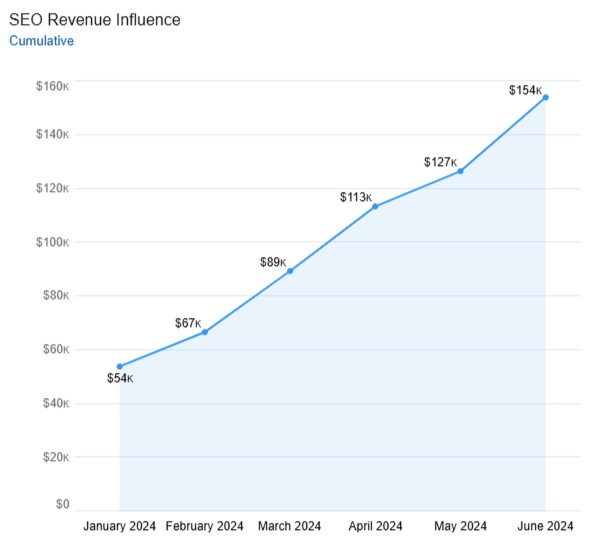 Screenshot from Google, April 2025
Screenshot from Google, April 2025Heeet actively tracks every touchpoint, ensuring that the actual impact of SEO is neither underestimated nor misrepresented.
Rather than neglecting SEO’s role when a prospect converts through another channel, Heeet delivers a complete view of how different personas in the buying committee interact with each piece of content and where they’re converting. This empowers businesses to make informed, data-driven SEO strategies and investment decisions.
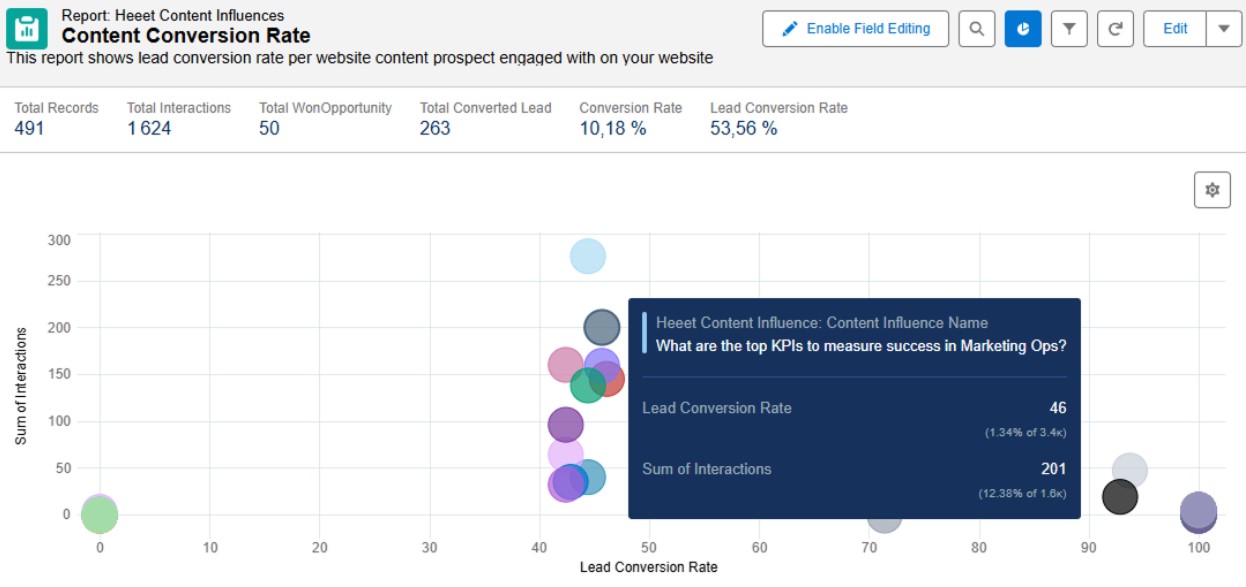 Screenshot from Heeet, April 2025
Screenshot from Heeet, April 2025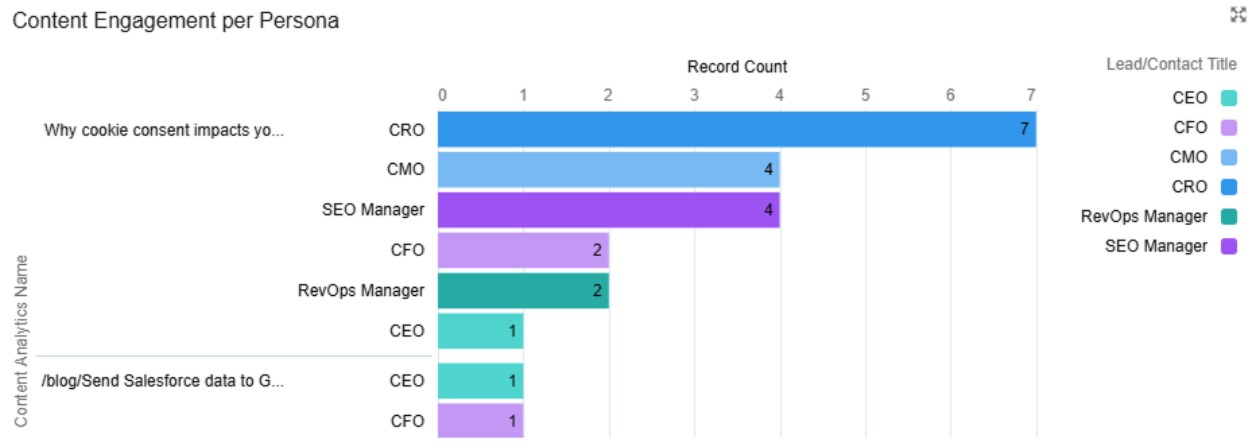 Screenshot from Heeet, April 2025
Screenshot from Heeet, April 2025Measuring ROI is non-negotiable and hinges on precise revenue tracking and a thorough understanding of costs. Heeet streamlines this process by directly integrating SEO costs into Salesforce, covering all production expenses such as software, human resources, design, and other strategic investments.
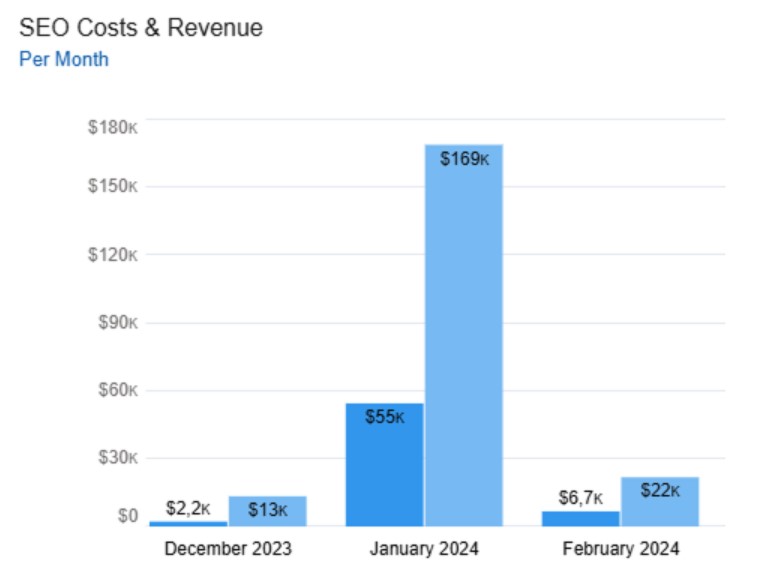 Screenshot from Heeet, April 2025
Screenshot from Heeet, April 2025Businesses can accurately evaluate SEO profitability by linking these costs to SEO-driven revenue. Heeet delivers a straightforward, unified view of previously fragmented data within Salesforce, empowering marketing and finance teams to confidently assess SEO ROI with a single tool.
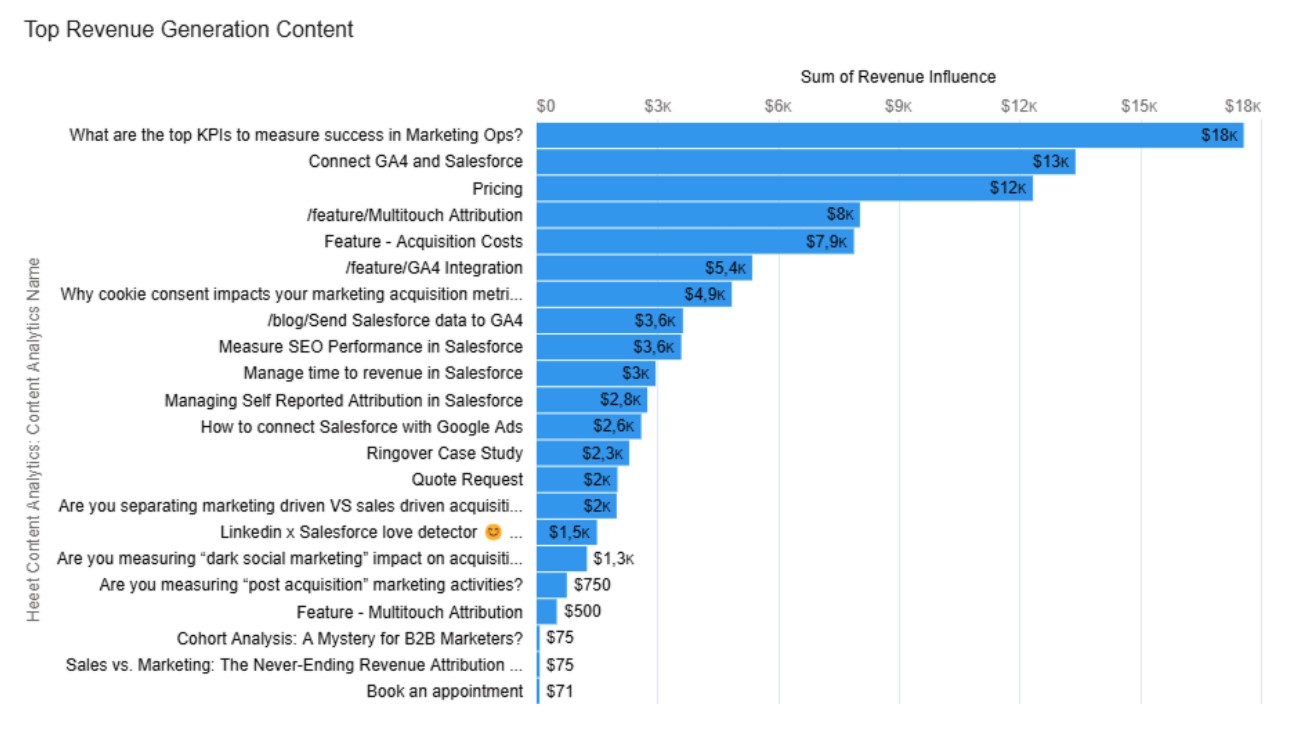 Screenshot from Heeet, April 2025
Screenshot from Heeet, April 2025SEO is more than ranking on Google; it’s about driving impactful engagement with quality content referenced in the multiple search tools buyers use. Heeet tracks which content prospects engage with and ties it directly to revenue outcomes, providing marketing and sales teams with critical insights that propel them forward. With our Google Search Console integration, we’re helping marketers draw more data into Salesforce to get the unified view of their content’s performance in a single place and connect search intents with business outcomes (leads, converted leads, revenue,…). This enables marketers to align ranking position with search intent and revenue, enhancing content strategy and tracking performance over time.
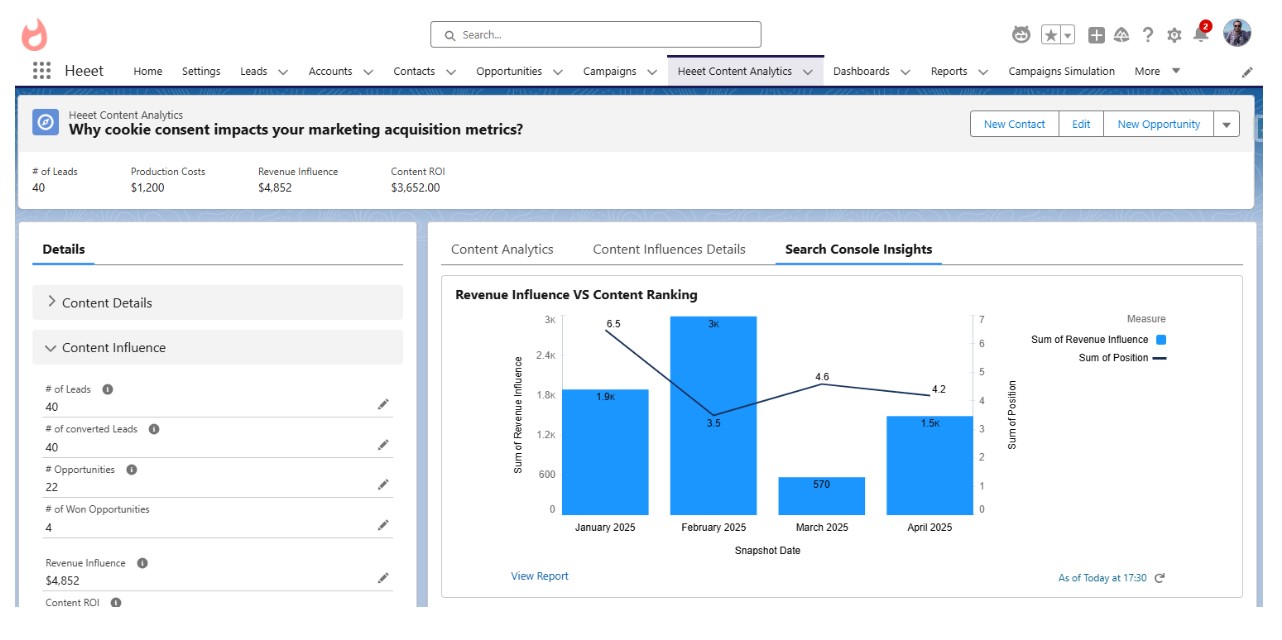 Screenshot from Heeet, April 2025
Screenshot from Heeet, April 2025For B2B marketers pairing their SEO content with a paid strategy, our latest Google Ads update allows users to see the exact search query that prospects typed before clicking on a search result. This allows SEO experts and copywriters to gain the intel they need to reduce their cost per lead by creating content they know their audience is searching for.
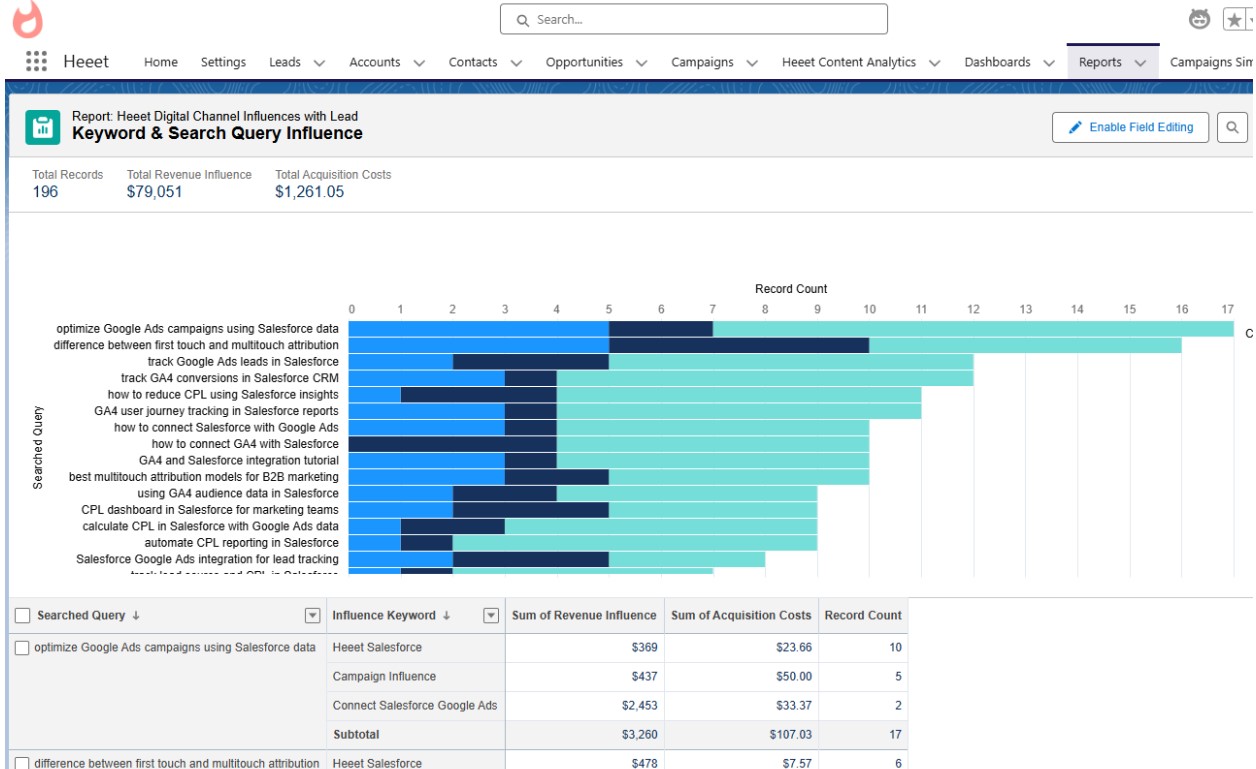 Screenshot from Heeet, April 2025
Screenshot from Heeet, April 2025Ready to enhance your marketing ROI tracking and connect every marketing activity to revenue?
From SEO to events, paid ads, social organic, AI referrals, webinars, and social ads, Heeet helps you uncover the real performance of your marketing efforts and turn revenue data into actionable insights.
Image Credits
Featured Image: Image by Shutterstock. Used with permission.
In-Post Image: Images by Heeet. Used with permission.

